Related Research Articles
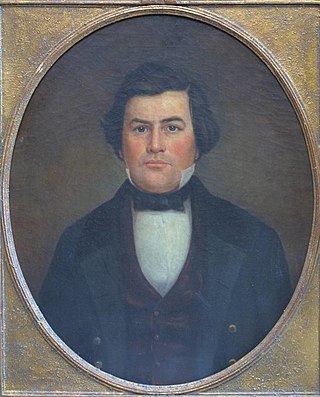
John Selden Roane was an American politician and lawyer who served as the fourth Governor of Arkansas from 1849 to 1852. Prior to this he commanded the Arkansas Mounted Infantry Regiment following the death of Colonel Archibald Yell at the Battle of Buena Vista. Roane also served as a senior officer of the Confederate States Army who commanded infantry in the Trans-Mississippi Theater of the American Civil War.

The United Confederate Veterans was an American Civil War veterans' organization headquartered in New Orleans, Louisiana. It was organized on June 10, 1889, by ex-soldiers and sailors of the Confederate States of America as a merger between the Louisiana Division of the Veteran Confederate States Cavalry Association; N. B. Forrest Camp of Chattanooga, Tennessee; Tennessee Division of the Veteran Confederate States Cavalry Association; Tennessee Division of Association of Confederate Soldiers; Benevolent Association of Confederate Veterans of Shreveport, Louisiana; Confederate Association of Iberville Parish, Louisiana; Eighteenth Louisiana; Adams County (Mississippi) Veterans' Association; Louisiana Division of the Army of Tennessee; and Louisiana Division of the Army of Northern Virginia.

General Edmund Kirby Smith was a senior officer of the Confederate States Army who commanded the Trans-Mississippi Department from 1863 to 1865. Before the American Civil War, Smith served as an officer of the United States Army.

Howell Cobb was an American and later Confederate political figure. A southern Democrat, Cobb was a five-term member of the United States House of Representatives and the speaker of the House from 1849 to 1851. He also served as the 40th governor of Georgia (1851–1853) and as a secretary of the treasury under President James Buchanan (1857–1860).

Neill Smith Brown was an American politician and diplomat who served as the 12th Governor of Tennessee from 1847 to 1849, and as the United States Minister to Russia from 1850 to 1853. He also served several terms in the Tennessee House of Representatives, and was Speaker of the House for the 1855–1857 term. A lifelong Whig, Brown campaigned to keep Tennessee in the Union in the years leading up to the Civil War. However, once the war began, he sided with the Confederacy.

John Alexander McClernand was an American lawyer and politician, and a Union Army general in the American Civil War. He was a prominent Democratic politician in Illinois and a member of the United States House of Representatives before the war. McClernand was firmly dedicated to the principles of Jacksonian democracy and supported the Compromise of 1850.

George Washington Gordon was a general in the Confederate States Army during the American Civil War. After the war, he practiced law in Pulaski, Tennessee, where the Ku Klux Klan was formed. He became one of the Klan's first members. In 1867, Gordon became the Klan's first Grand Dragon for the Realm of Tennessee, and wrote its "Precept," a book describing its organization, purpose, and principles. He was also a member of the United States House of Representatives for the 10th congressional district of Tennessee.

John Lendrum Mitchell was an American politician and philanthropist from Milwaukee, Wisconsin. A Democrat, he served one term each in the United States Senate (1893–1899) and House of Representatives (1891–1893). Earlier, he was a member of the Wisconsin State Senate and a Union Army officer in the American Civil War.

William Read Scurry was a general in the Confederate States Army in the American Civil War.
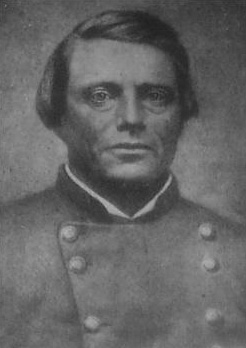
Thomas Green was an American soldier and lawyer, who took part in the Texan Revolution of 1835–36, serving under Sam Houston, who rewarded him with a land grant. Green was clerk of the Texas Supreme Court until the outbreak of the Civil War, when he became a Confederate cavalry leader. After winning several victories, including the Battle of Valverde and the recapture of Galveston, he was promoted brigadier and assigned command of the cavalry division of the Trans-Mississippi Department. In the Red River Campaign, he was mortally wounded while charging a fleet of Federal gunboats. The Union naval commander David Dixon Porter paid tribute to Green as a serious loss to the Confederacy.
The Western Military Institute was a preparatory school and college located first in Kentucky, then in Tennessee. It was founded in 1847 in Georgetown, Kentucky, and it later moved to Nashville, Tennessee, where it merged with Montgomery Bell Academy in 1867. The former campus is now Vanderbilt University's Peabody College. Alumni include prominent Confederate veterans and Southern politicians.
John Addison Thomas was an American engineer and military officer who served in the United States Army, and later served as United States Assistant Secretary of State.
William S. Barry was an American politician who served as a Deputy from Mississippi to the Provisional Congress of the Confederate States from 1861 to 1862. He was also a U.S. Representative from 1853 to 1855, representing the state of Mississippi.
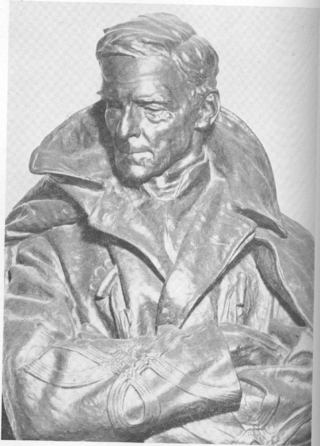
The Colonel Richard Owen bust is a public artwork by American artist Belle Kinney Scholz and is located in the Indiana Statehouse in Indianapolis, Indiana. The bronze bust was dedicated in 1913 as a memorial to U.S. Army Colonel Richard Owen. It was funded by contributions from individuals and Confederate veteran associations in recognition of Owen's courtesy to Confederate prisoners of war while he was commandant of Camp Morton, a prison camp in Indianapolis, during the American Civil War. The bust is approximately 70 inches (180 cm) tall, 40 inches (100 cm), and 21 inches (53 cm).
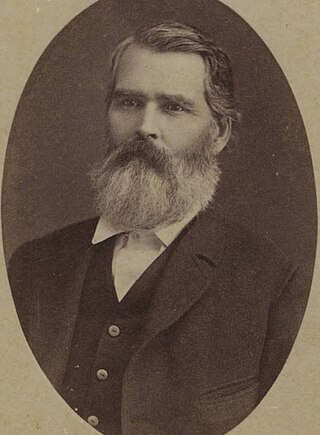
George Robertson Reeves was a former Speaker of the House of the State of Texas and a Colonel in the Confederate States's 11th Texas Cavalry Regiment during the American Civil War. He also served as a pioneering member of Grayson County, Texas in which he also served as a Sheriff and tax collector.
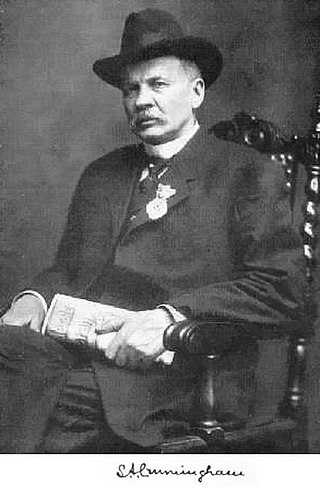
Sumner Archibald Cunningham was an American Confederate soldier and journalist. He was the editor of a short lived Confederate magazine called "Our Day" (1883-1884) published in New York. In 1893 he established the Confederate Veteran, a bimonthly magazine about veterans of the Confederate States Army until his death in 1913.
Richard Alexander Sneed was an American Confederate veteran, Klansman and politician. After serving in the Confederate States Army during the American Civil War of 1861-1865, he was a co-founder of the Ku Klux Klan chapter in Madison County, Tennessee. A Democrat, he served as the Oklahoma Secretary of State from 1923 to 1927, the Oklahoma State Treasurer from 1927 to 1931, and the Oklahoma Secretary of State again from 1931 to 1935.
R. R. Sneed was an American politician. He served as the Tennessee Secretary of State from 1913 to 1917.

William M. Inge was an American Democratic politician. He was the Speaker of the Mississippi House of Representatives from 1884 to 1886.
References
- 1 2 3 4 5 6 7 8 "FOURTH GENERATION". Maryland State Archives. Retrieved September 29, 2016.
- 1 2 Allison, John (1905). Notable Men of Tennessee: Personal and Genealogical, with portraits. Atlanta, Georgia: Southern historical Association. pp. 153–155. OCLC 2561350 – via Internet Archive.